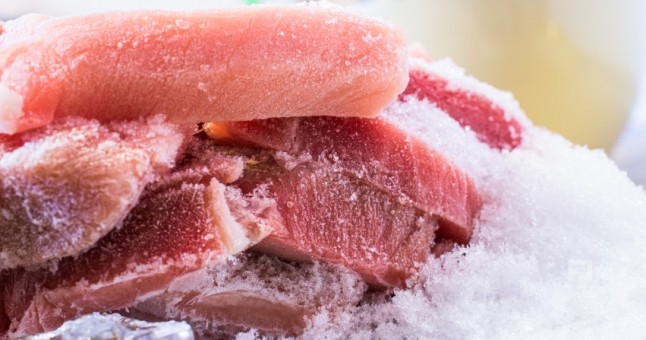
Meats are usually frozen for later processing or for long-term storage or for export. Since the storage period is considerably longer than the cold (chilled) storage period; It is blast-frozen (shocked) to minimize physical, biochemical and microbiological changes affecting the quality of storage. During the blast-freezing (shocking) process, most of the water content of the meat about 80 percent solidifies into pure ice crystals.
The products should be shocked (blast frozen) before they are taken to the frozen storage rooms. Shocking (blast freezing) temperature is between -35°C and -40°C. Shocking completed when the core temperature of the product reaches to - 18°C. In Blast Freezing chamber air circulation is quite fast from 4 m/s to 6 m/s. In shocking chambers air circulation coefficient is used as 150- 300. Relative humidity is kept at or above 95%.
In those conditions half of a beef carcass or its one quarter is frozen in 16-20 hours approximately. While packaged meat with 54 × 34 × 16 cm dimensions can be frozen in about 4 hours, smaller packets can be frozen in almost 1 hour. The cuts and offal are covered with stretch film or vacuum packed in plastic bags and then placed in carton boxes and frozen.
The maximum crystallization temperature is in between -1 ° and -5 ° C. speed of the shocking (blast freezing / quick freezing) has direct effect on the size of the formed ice crystals. The shorter the shocking (blast freezing) time another word higher freezing speed facilitates to obtain the higher the quality products.
Slow shocking (quick freezing) leads to migration of water out of muscle cells and right after resulting formation of larger crystals. On the contrary, high speed shocking is slow down the migration of water and facilitates generation of small crystals.
